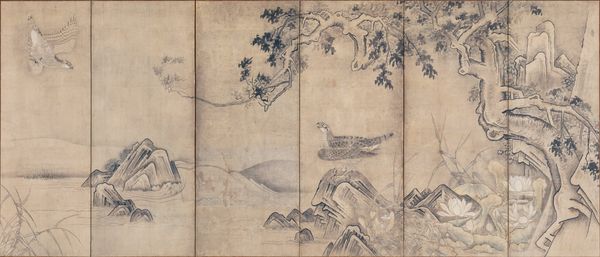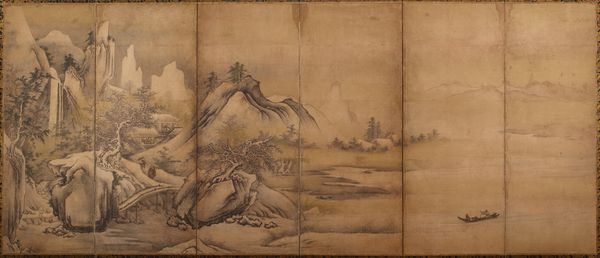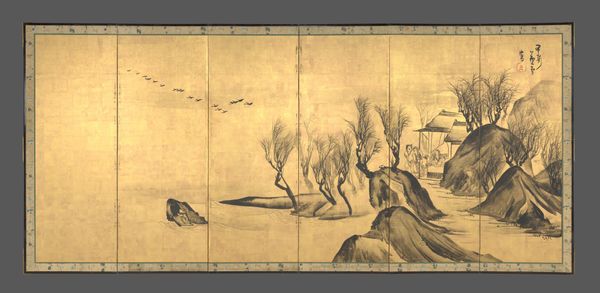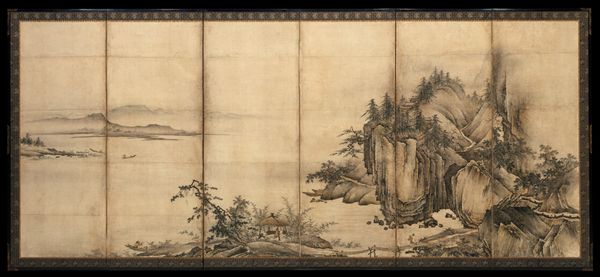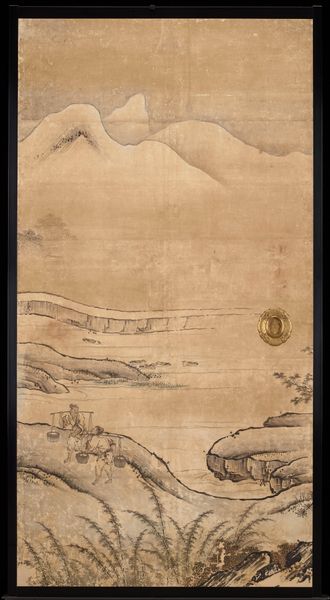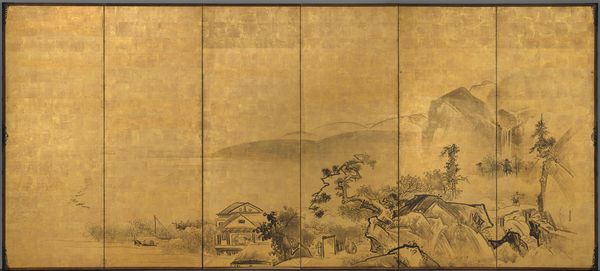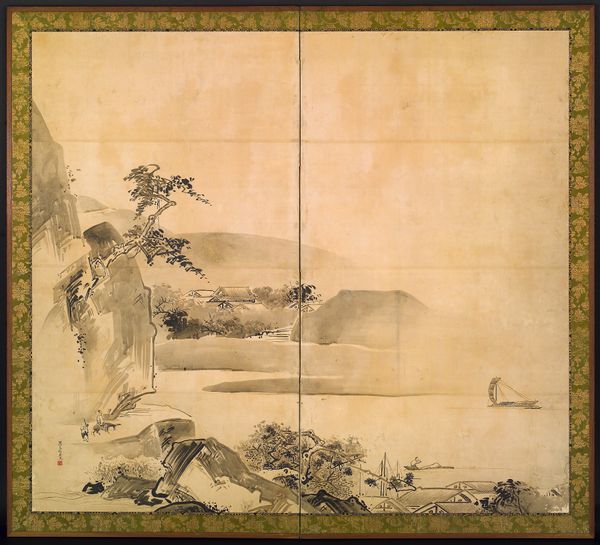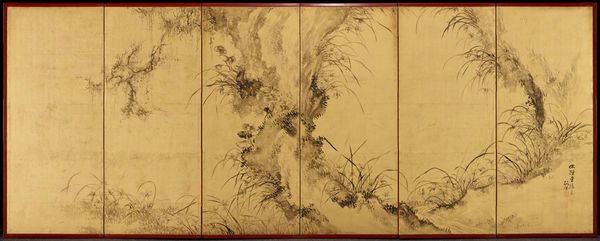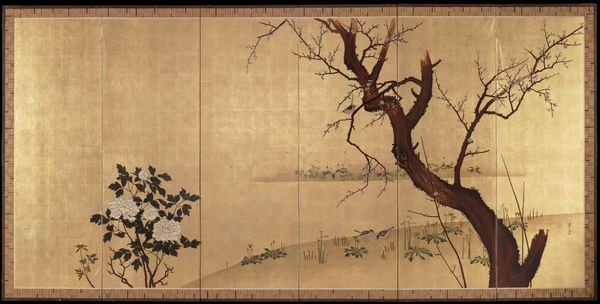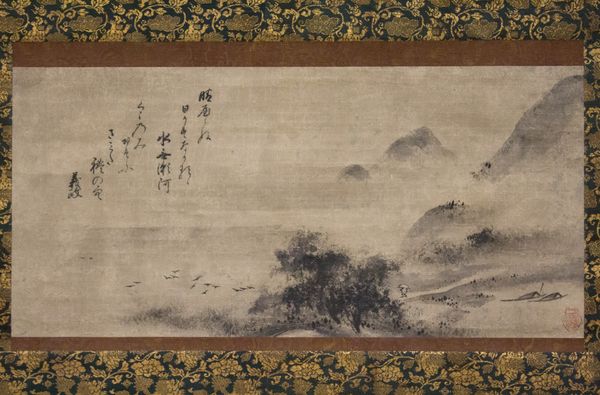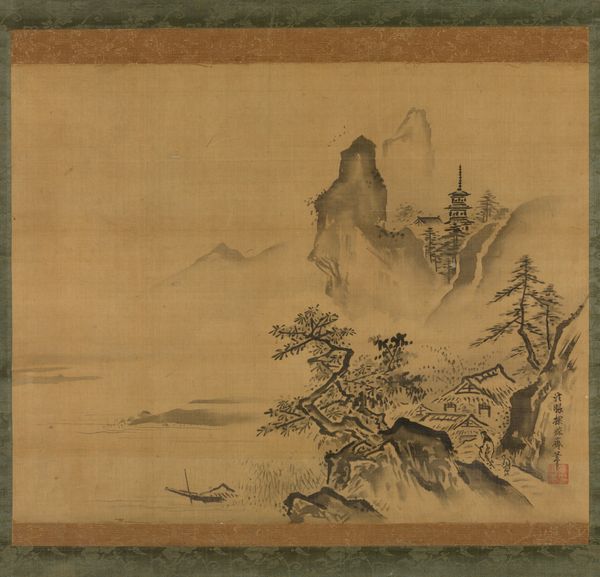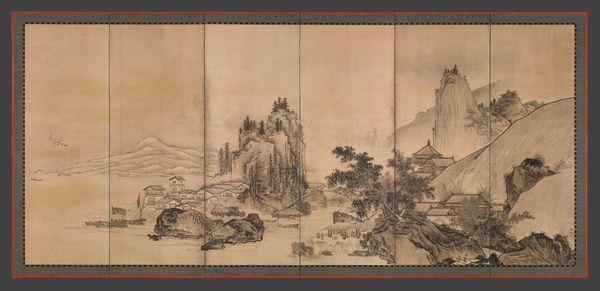![Spring and Summer [right of a pair of Landscapes of the Four Seasons] by Kano School](/_next/image?url=https%3A%2F%2Fd2w8kbdekdi1gv.cloudfront.net%2FeyJidWNrZXQiOiAiYXJ0ZXJhLWltYWdlcy1idWNrZXQiLCAia2V5IjogImFydHdvcmtzL2M2NGJlZGI3LTJhOWUtNGUyMi1hOGUxLWRhYjE0ZmQyOGQ1Ni9jNjRiZWRiNy0yYTllLTRlMjItYThlMS1kYWIxNGZkMjhkNTZfZnVsbC5qcGciLCAiZWRpdHMiOiB7InJlc2l6ZSI6IHsid2lkdGgiOiAxOTIwLCAiaGVpZ2h0IjogMTkyMCwgImZpdCI6ICJpbnNpZGUifX19&w=3840&q=75)
Spring and Summer [right of a pair of Landscapes of the Four Seasons] c. mid 16th century
0:00
0:00
painting, watercolor
#
painting
#
asian-art
#
landscape
#
japan
#
watercolor
#
watercolor
Dimensions: 67 5/8 x 150 in. (171.77 x 381 cm)
Copyright: Public Domain
Editor: This is "Spring and Summer", a mid-16th century watercolor painting, right side of a pair, attributed to the Kano School. It's part of the "Landscapes of the Four Seasons" series. The soft palette creates a sense of serenity, yet the composition seems to divide nature from people, separating landscape elements from human figures along the bottom of the panel. What do you see in this piece? Curator: The seeming serenity masks a complex interplay of power dynamics and cultural expression. Consider the Kano School's patronage. These weren't simply pretty pictures; they were commissioned by the elite, designed to reflect and reinforce their social status. The landscape itself becomes a carefully constructed representation of idealized dominion. Do you see how the human figures, while present, are diminutive in scale, almost overwhelmed by the natural environment? Editor: Yes, they seem very small against those towering rocks. I hadn’t thought about the role of patronage influencing the imagery. Curator: Exactly! Think about the philosophical underpinnings. Neo-Confucianism, prevalent at the time, emphasized hierarchy and order. Nature, in this context, wasn't just something to be admired, but a mirror reflecting the existing social order. The controlled brushstrokes, the very deliberate composition – it all speaks to a carefully managed, curated vision of the world. How does the use of monochrome – subtle as it is – inform this reading? Editor: Perhaps the muted tones minimize distraction, reinforcing the themes of control and order you mentioned? I'm starting to see how the formal elements contribute to a complex web of historical and social meanings. Curator: Precisely. It reminds us to question whose perspective is being presented, whose voices are amplified, and whose are silenced within the painted landscape. It prompts reflection on social and power dynamics beyond just nature. Editor: I now see so many layers beyond the surface calm. Thank you!
Comments
minneapolisinstituteofart almost 2 years ago
⋮
By the 1500s, Japanese painters had become adept at producing landscapes based on the imagined mountains and rivers of China. They based their works on prototypes produced by famous painters from Chinese antiquity, including Ma Yuan (c. 1160/65–1225) and Xia Gui (active c. 1195–1230). Stylistically, however, the Japanese approach—particularly that of artists associated with the Kano house—was more decorative, especially when applied to the large format of folding screens. Painters sharply outlined their trees and rocks and textured them with rhythmic patterns of dots and dashes. They also applied washes of gold for dramatic effect. This pair of screens displays a compositional mode frequently used by Kano painters—framing a misty waterway with mountains. By varying seasonal motifs from right to left, artists could suggest the passage of the seasons, from the new leaves of spring at far right to the icy peaks of winter at far left, a technique that can be seen in this pair of screens.
Join the conversation
Join millions of artists and users on Artera today and experience the ultimate creative platform.
